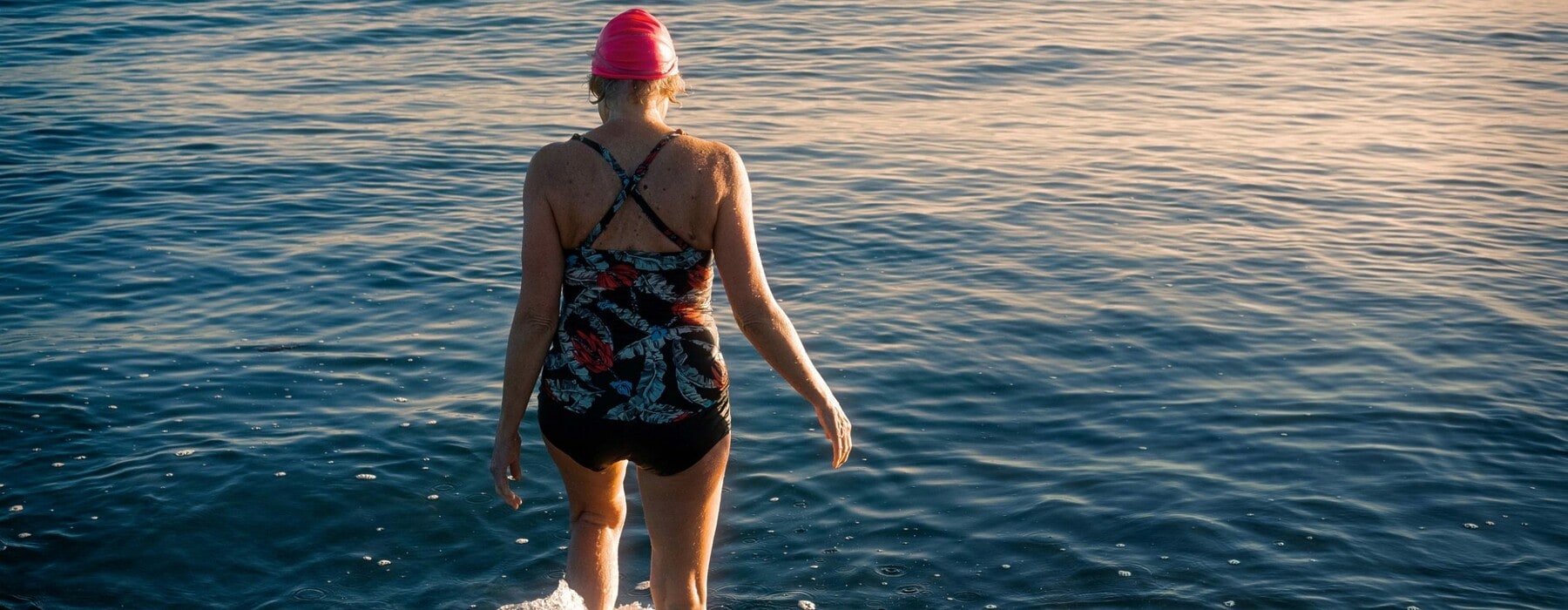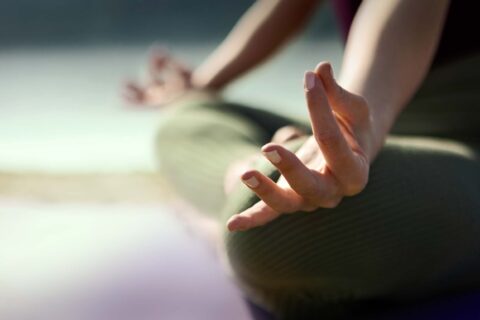Rachel Clare dives into the world of outdoor swimming and explores the claims that it’s a wonderful natural tonic for our physical and emotional health.
Ask any New Zealander to share a childhood memory of swimming and they’ll oblige. My father-in-law recollects swimming with Opo, the legendary dolphin of Opononi, Hokianga, as a boy and how he would bang two rocks together under the water so Opo would swim over to the local kids and away from the hordes of tourists. My mother has such happy memories of childhood beach holidays at Matapouri Bay, on the Tutukaka Coast, that a painting of the same beach hangs on her lounge wall.
Further down our coastal country, my own childhood swimming memories are dominated by the days and days of swimming we did in the school holidays at the Napier Intermediate pool, trudging down the hot main road, plastic bag of togs in hand. One summer afternoon I swam a mile – 64 lengths of the pool – for no particular reason other than knowing I’d done it. This summer, jealous of the Opo story, my kids and I dived off a boat in Kaikoura and swam with dolphins. “When I shut my eyes I still see dolphins,” my 11-year-old said that night.
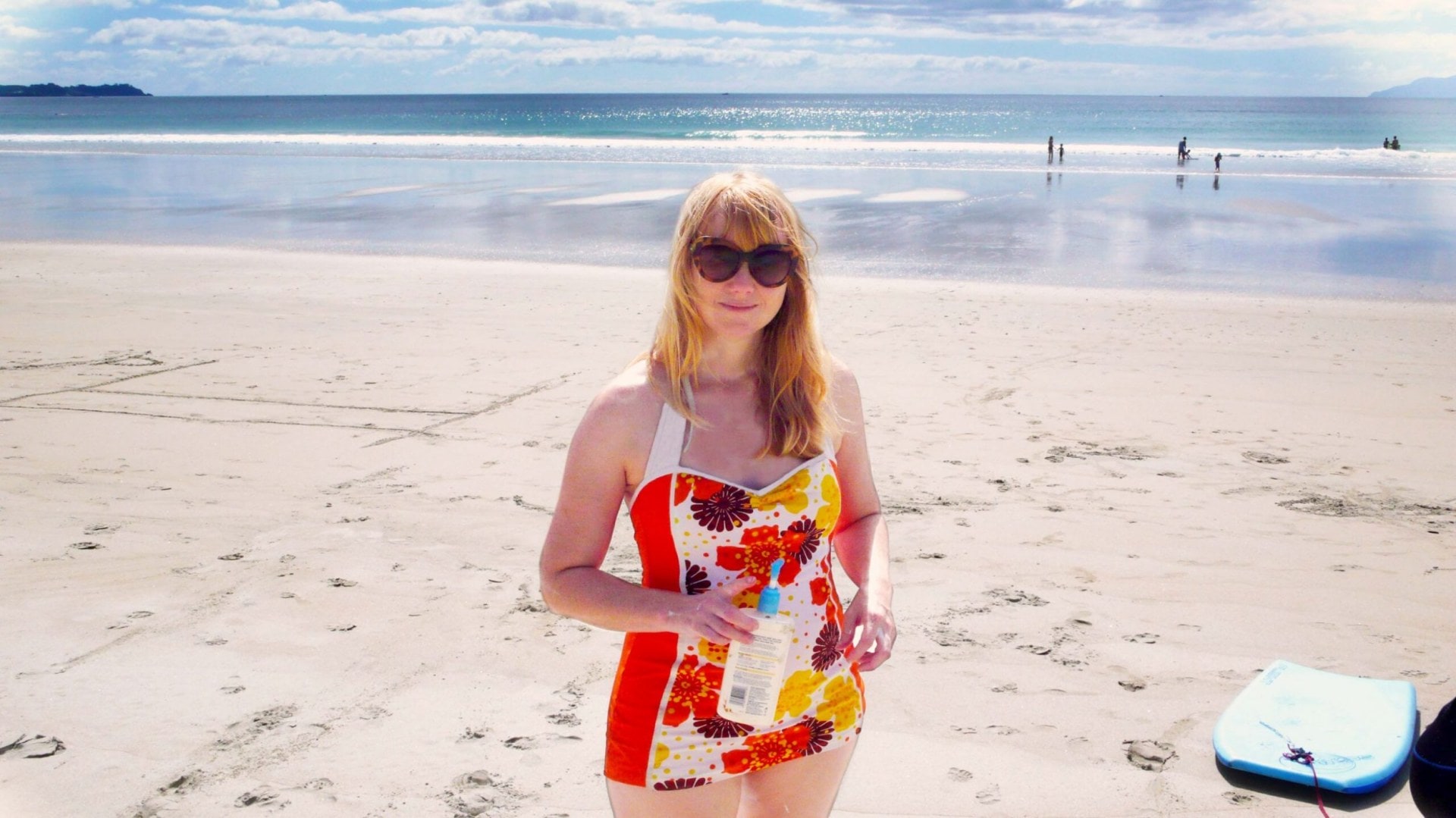
With around 15,000km of coastline and a beach never more than 130km away, it’s understandable we are a nation that loves to get wet. And that doesn’t even factor in lakes, rivers and swimming pools. There are swims to be had everywhere.
Annette Lees, environmentalist and author of Swim: A year of swimming outdoors in New Zealand, is a dedicated outdoor swimmer. Motivated by a childhood resolution not to become a “dusty adult” who sat beside the water watching the kids swim, in 2015 she set herself a quest to go for an outdoor swim every day, regardless of the weather. She swam in rivers, lakes, ponds, the sea, estuaries, wetlands, springs and open-air pools – covered pools were out – and documented each swim in a diary. She agrees that our memories of swimming are vivid: “Even the adults that swim just a few times in summer, when asked, they really describe those swims with some relish – they’re searing memories, not confused memories.”
Mirroring this, health geographer Dr Ronan Foley wrote in an article for RTÉ, Ireland’s public broadcasting service: “Almost all swimmers describe the value of swimming to their health and wellbeing in lots of different ways. Most importantly, swimmers explain this really eloquently. They think they have nothing to say, but as they speak, a rich voice emerges from the water.” He says this voice echoes the depth of their connection to the place where they swim.
Ronan is an expert on therapeutic landscapes, including “blue” spaces – bodies of water such as beaches, lakes, rivers and canals. Just as green spaces are thought to be good for our bodies and minds, studies have shown that blue spaces are also beneficial, if not more so. His research includes an exploration of outdoor swimming as a therapeutic activity.
“One important thing I have discovered,” he said, in an article on the joys of swimming, “is that swimming places are really significant across people’s lives … They mean something to people in terms of memory and identity, through their shared family histories, discovered afresh when children arrive, but lasting throughout people’s lives.”
A gentle exercise
So what is it about getting wet that drenches the psyche in such a visceral way? On a purely physical level, taking a dip cools us down on hot days, but it also creates a sensation of weightlessness that no other physical activity does. That’s because in the water 90 percent of your body is buoyant – my nine-year-old loves holding me up in his arms in the water, thrilled by the illusion of strength it creates. This makes it an excellent form of exercise for people at risk of injuries or recovering from them, elderly people with less mobility, and people with disabilities (who often gain a mobility they don’t usually have when submerged in water). As well as being an excellent low-impact activity for improving fitness, studies have proved that swimming can help with conditions such as fibromyalgia, arthritis, back pain and heart disease. And, of course, it’s a brilliant workout for the heart and lungs, requiring us to control our breathing.
And then there’s seawater – a natural tonic. Rich in minerals such as sodium, chloride, sulphate, magnesium and calcium, salt water can help heal some wounds and improve skin conditions such as psoriasis and eczema (although some eczema sufferers find that salt water aggravates their symptoms). It is also effective for flushing out sinuses, providing relief from hay fever, sinusitis and other respiratory problems – if you gargle a solution of salt and water at home when you get a sore throat, remember where that salt came from in the first place.
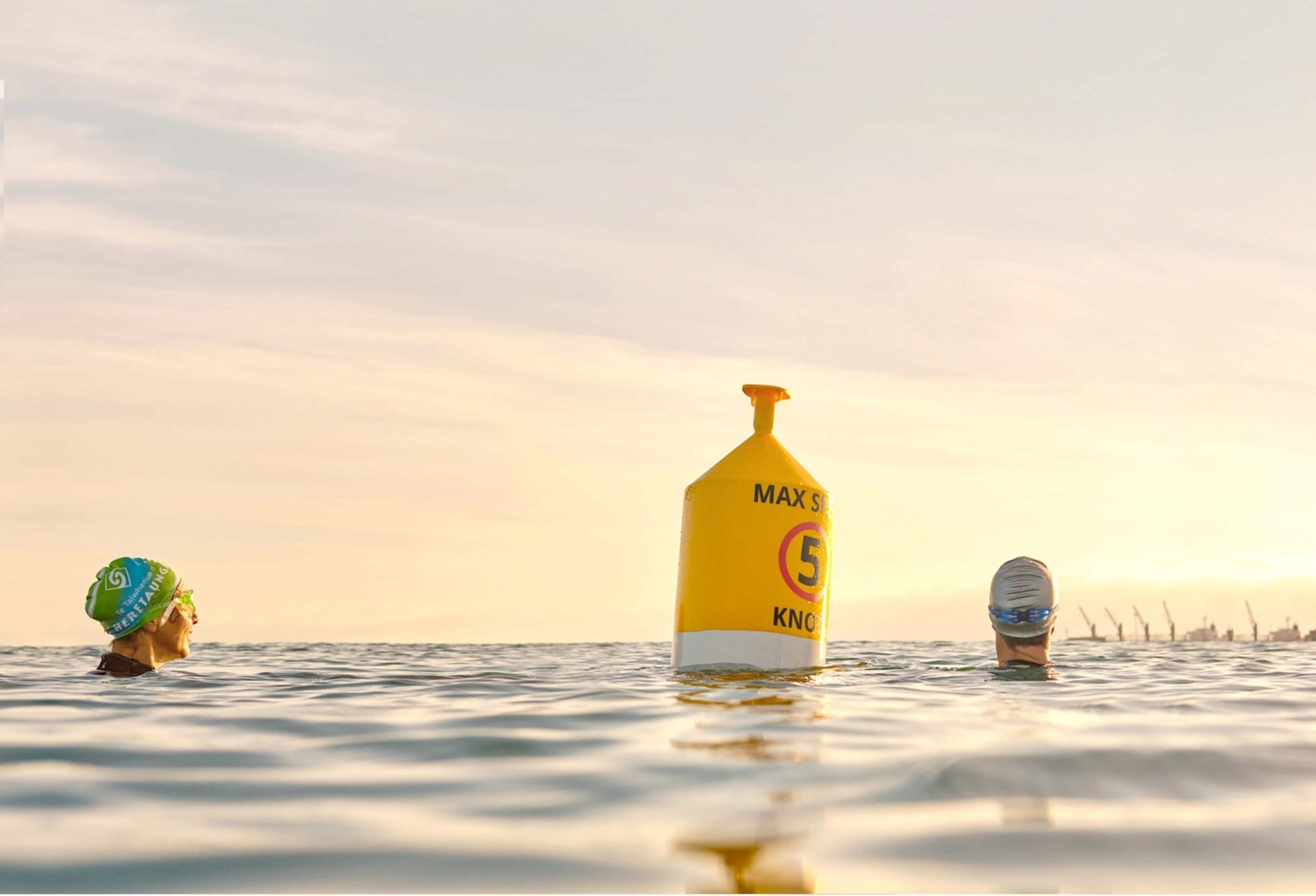
Wet and wild
Apart from the health-giving qualities of salt water, you could gain other physical benefits by swimming in an indoor pool, but anecdotal evidence and science show there is more to be gained from outdoor swimming in nature, or “wild swimming” – the trendy name for it.
As an experience that improves wellbeing, swimming in natural aquatic environments is incomparable to covered pools, according to both outdoor swimmers and scientists. “In terms of getting into water – wild water, as opposed to swimming pool water – it has an overall and profound immediate effect,” says Annette. “You’re entering the natural world in a way that no other pastime allows you to do. Unlike boating, skiing, cycling and running, only swimming allows you to enter another medium, a medium of the natural world. It’s the liquid – the cool of it, the colour of it – and the wildlife, which makes you feel slightly perilous. It’s enchanting.”
Dr Karen Throsby, a sociologist at the University of Leeds, UK, and a marathon swimmer, is the author of the charmingly titled paper “If I go in like a cranky sea lion, I come out like a smiling dolphin”. In her 2013 study of 45 outdoor marathon swimmers and the pleasures they derived from being in water, she writes of how one of her interviewees, a marathon swimmer called Elizabeth, said that a swimming pool was a “dead puddle” compared to the sea. “I live in this incredibly urban city,” she said. “Then you go out into the bay and it’s very clear that there is a natural world right here. And that kind of world of nature is huge.”
On the other side of the world, in the coastal village of Haumoana, Hawke’s Bay, 52-year-old year-round ocean swimmer Davey Jones feels the same. More than five years ago, when he started his daily swimming routine, he started off in a pool but then, he says, “the ocean water took over and we decided we could never go back to the chlorinated water”.
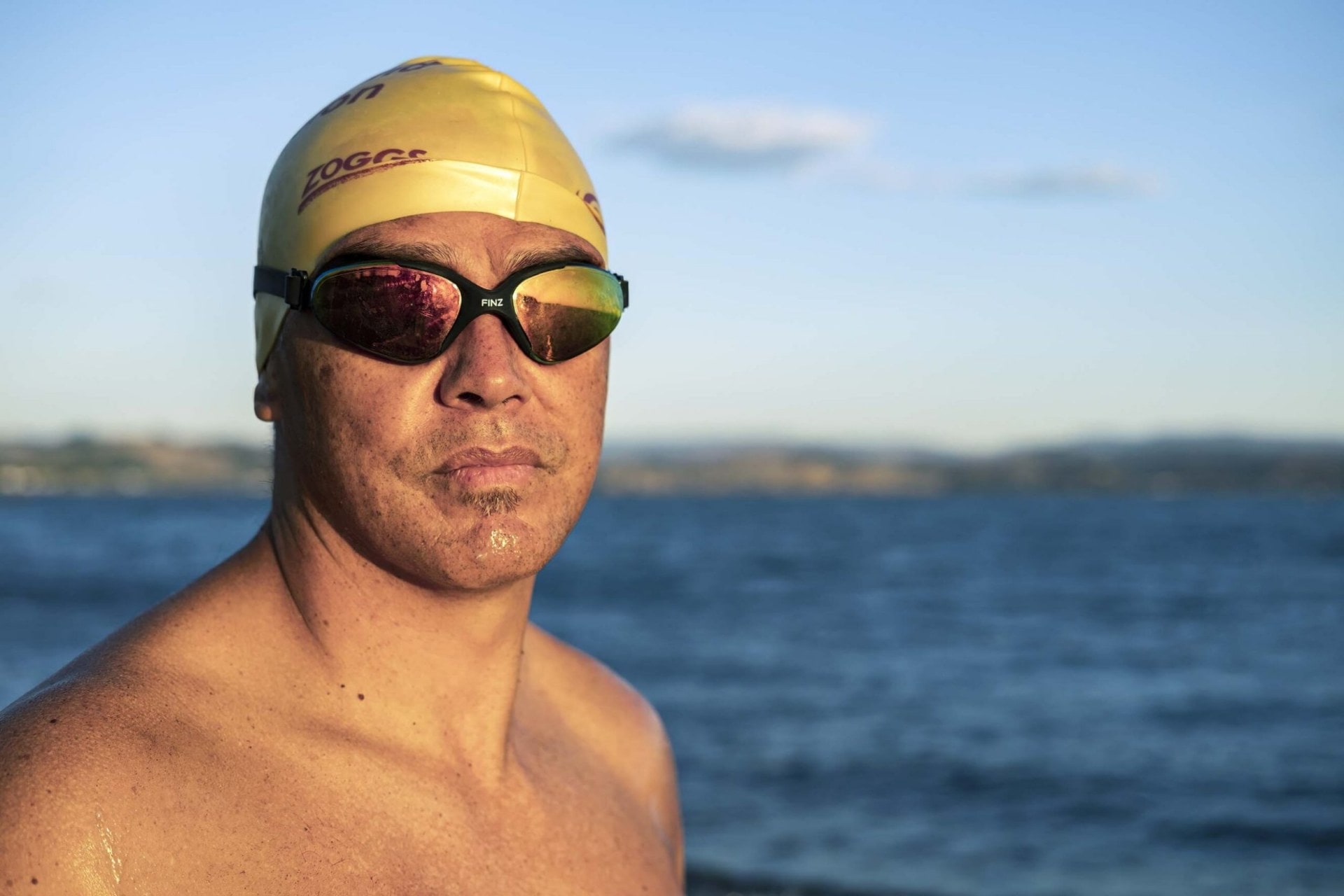
But what about sharks?
I’m embarrassed to admit that I asked every sea swimmer I interviewed this question – the Jaws movies have a lot to answer for. Although, tragically, there are fatalities from time to time, and our seas are teeming with sharks (comforting, no?), only 13 fatal shark attacks have been recorded in New Zealand in the last 170 years.
“You’re in their territory, not your own, so you do need to be responsive,” says Annette, who modestly describes herself as “bold” rather than “brave”. She describes a recent night-swimming experience where phosphorescence made her more conscious of attracting the attention of sharks. “You actually enter a state of being that has its own specialness because you can’t be indifferent. I was alert and felt fantastic. The frisson of risk is part of that story.”
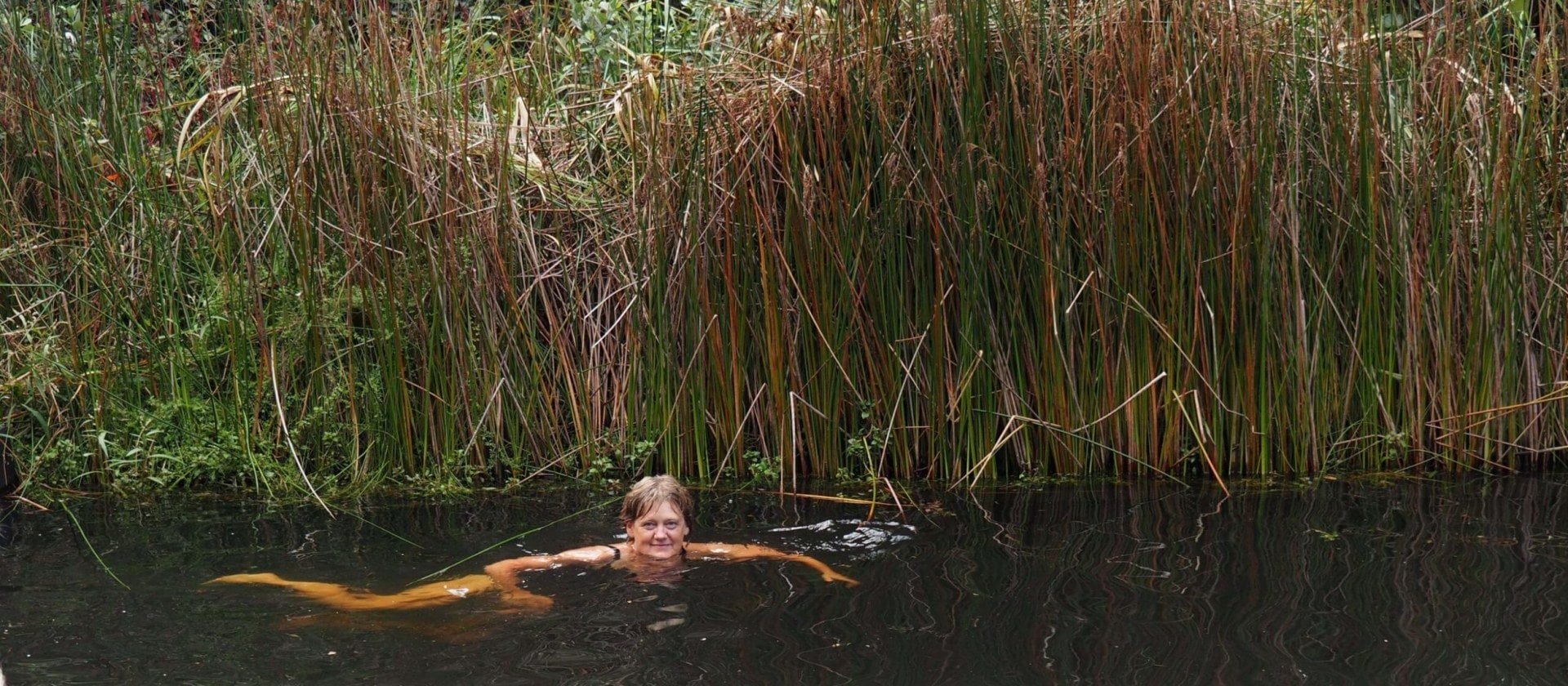
Davey agrees: “People ask me that all the time and I say, ‘Well, it’s the sea!’ I tell them that they’re much more likely to be hit by a bus. You know the dangers on the road. The same goes for the ocean. It’s a lovely spot but you’ve got to be aware that there are living things out there that could potentially get a bit hungry. Generally it’s not about hunger, more about investigation. I had a leopard seal swim up right next to me. I stopped and looked up and he was looking straight at me. I thought, ‘There’s no chance of me outrunning him so I’m just going to carry on.’”
In the sea, a far greater risk is becoming caught in a rip. “So much about surviving in water is confidence,” says Annette. “Rips can form in a second. Knowing what to do in a rip is just as important as being able to spot one.” She points out that there are many cautionary tales. “But really, swimming is a huge joy and 99.99 percent of people who get in water get out of water fine.”
Better than therapy?
There is a rising wave of scientific evidence that swimming is a highly effective therapy for dealing with stress or treating mental health disorders. “One of the key pleasures that many of the swimmers described in their everyday swimming,” Karen noted in a paper outlining her study findings, “was being able to find a quiet, contemplative space where they could either consider a particular problem or empty their heads and detach from the intrusive demands of everyday life. Immersion is an affectively transformative experience.”
Her interviewees describe outdoor swimming as being “like Prozac” or “better than therapy”. Missing a swim was like “missing a meal”. This was especially true for women with stressful lives. “For those women coping with significant burdens of paid, domestic and caring work,” she writes, “their regular swim emerged less as a route to transformative contemplation, and more as a piece of jealously guarded ‘me-time’.”
Counselling psychologist and mindfulness teacher Hannah Denton also lists transformation as one of the psychological benefits of swimming, in a study of six sea swimmers. “The interaction between sea and swimmer resulted in changes in the swimmer’s experience of themselves,” she observes. For her master’s degree in clinical research with Brighton University she conducted and recorded interviews in the water, swimming alongside her subjects, then stopping them periodically throughout the swim to ask them questions about how their mood had changed during swimming and what thoughts were uppermost in their mind.
She observed how swimming reoriented them. “It was clear, particularly as a result of the interviews in the water, that participants could become totally absorbed in the activity of swimming. Achieving a state when participants are so involved in an activity that nothing else matters has been shown to have many psychological benefits.”
In the field of positive psychology, this is a phenomenon known as “flow” or being “in the zone” and, along with the enjoyment the person derives at the time, it is also thought that it helps people regulate their emotions better and stay motivated.
Is cold water the key?
Splashing your face with cold water has long been touted as a refreshing remedy if you’re feeling tired or sluggish, but many swimmers take this further, engaging in a type of swimming known as cold-water swimming or winter swimming (if done in winter) in temperatures below 15°C. The very extreme engage in ice-swimming in water temperatures below 5°C. Physical health benefits from taking an icy dip, a popular activity in Scandinavian countries, include lower blood pressure and improved symptoms for conditions such as rheumatism, fibromyalgia or asthma. A 1999 study showed that winter swimmers had 40 percent less illnesses involving the upper respiratory tract.
Cold-water and winter swimming is also a therapeutic treatment for anxiety and depression. When our bodies are submerged in very cold water and cool down rapidly, they go into a state of shock, flooding the body with stress hormones. This phenomenon, known as the “cold-shock response” reduces levels of inflammation and also chronic stress. Once they get through the initial shock of the cold water, winter swimmers are often left with a feeling of euphoria as adrenalin is released.
“You’ll be walking along a boardwalk covered in frost, thinking, ‘This is just crazy,’” says Davey, who swims without a wetsuit even in winter. “When you first dive under the water and you feel that hit of cold and it runs right through your body, it’s really quite invigorating. Your whole body just comes alive.”
Repeated exposure to cold water conditions the body to deal with the stress response. This isn’t a suitable treatment for everyone as the heart can speed up or slow down, which can be dangerous for people who are predisposed to heart issues. Sea swimmer and photographer Florence Charvin, who also lives in Hawke’s Bay, developed hypothermia after her first winter swim. “My mind slowed down and I couldn’t respond to people.” It took Florence hours to warm but she went back the next day – “Surprisingly enough, I was hooked” – and gradually acclimatised to cold water over time. Enthralled by the transcendental, magical quality of the early morning light, she even began documenting the local sea swimmers’ dawn swims for a series of photos, The Swimmers, some of which are featured in this article.
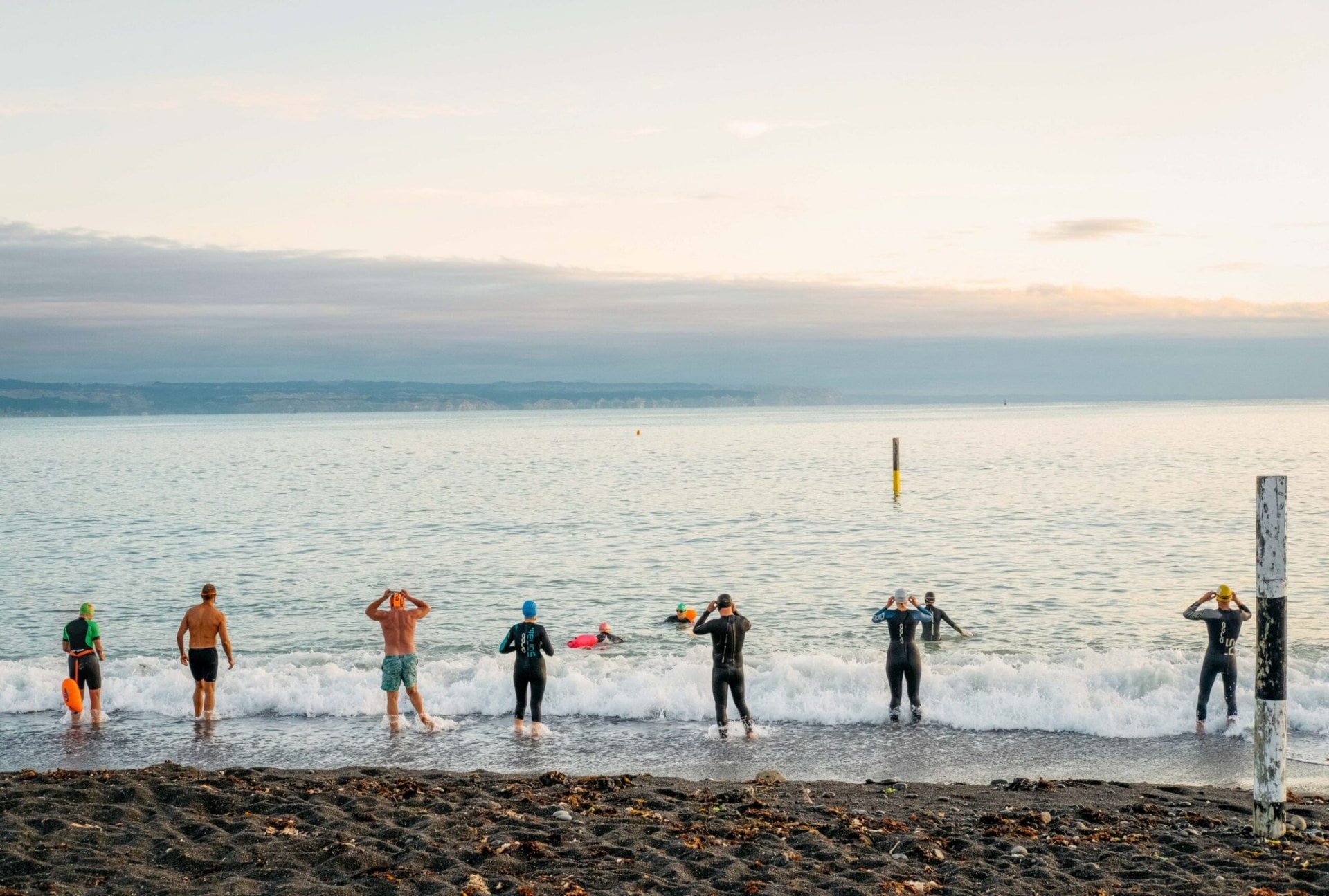
In a 2016 UK study, a 24-year-old woman who had been on medication for major depressive disorder since the age of 17, began a regular programme of cold-water swimming to improve her symptoms and as an alternative to antidepressants. Her mood gradually improved and she was able to stop taking her medication, remaining symptom-free a year later. Research that is still to be published, but which made headlines last October, shows that cold-water swimming creates high levels of a particular “cold-shock” protein (RBM3), which could potentially be used to prevent neurodegenerative diseases such as dementia.
Throughout our lives, our brains continually create new synapses (the connectors between brain cells) while unused synapses degenerate. An inability to create new synapses can lead to neurodegenerative conditions such as dementia. Scientists have known for some time that hibernating animals dismantle their synapses as they cool down during their long winter slumber. When they wake up, the presence of the protein RBM3 causes them to build new ones and their brains are all systems go. Replicating the impact of hibernation, researchers at Cambridge University studied cold-water swimmers at London’s Parliament Hill Lido, an outdoor pool, for three winters between 2016 to 2018. Compared with a control group of non-swimmers doing tai chi who weren’t cold, the hypothermic swimmers had markedly higher amounts of RBM3 in their blood.
This might make you want to plunge into icy waters late in life to ward off dementia, but it isn’t safe for all, particularly the elderly, as there are risks of hypothermia and heart failure. Scientists are, however, trying to create a medication that mimics the RBM3 protein.
It’s about community
Another contributor to wellbeing identified by Hannah through her swim-along interviews was that outdoor swimmers feel connected to nature but also to others as a result of swimming in groups. Davey, who has 10 to 12 swimmers in his swimming group, concurs: “Part of it is that we’re addicted to the swimming and the socialising. We even have our own deckchairs and after our swim we sit around in a little group, having a good catch-up and solving the world’s problems.”
In the book Phosphorescence, Julia Baird writes about her swimming group, The Bold and the Beautiful, who set off donned in their pink bathing caps from Manly Beach in Sydney every morning. She says the group’s name is “quite daft, but it’s a reminder that the squad was formed several years ago by middle-aged women who were too nervous to swim the distance alone. We take strength from one another because it’s such a strong community, a motley crew bound by a common love.”
Whether you’re swimming with a group or going solo, Annette says outdoor swimming makes you a kinder person too. “You also sleep better, you’re calmer and happier. You can carry the wairua of the sea with you into the next day and the next. Swimming gives you that childlike joy for free. All you have to do is get wet.” And as for her favourite swim? “The one that’s at my feet. Choose your local swim. Learn to love it.”

